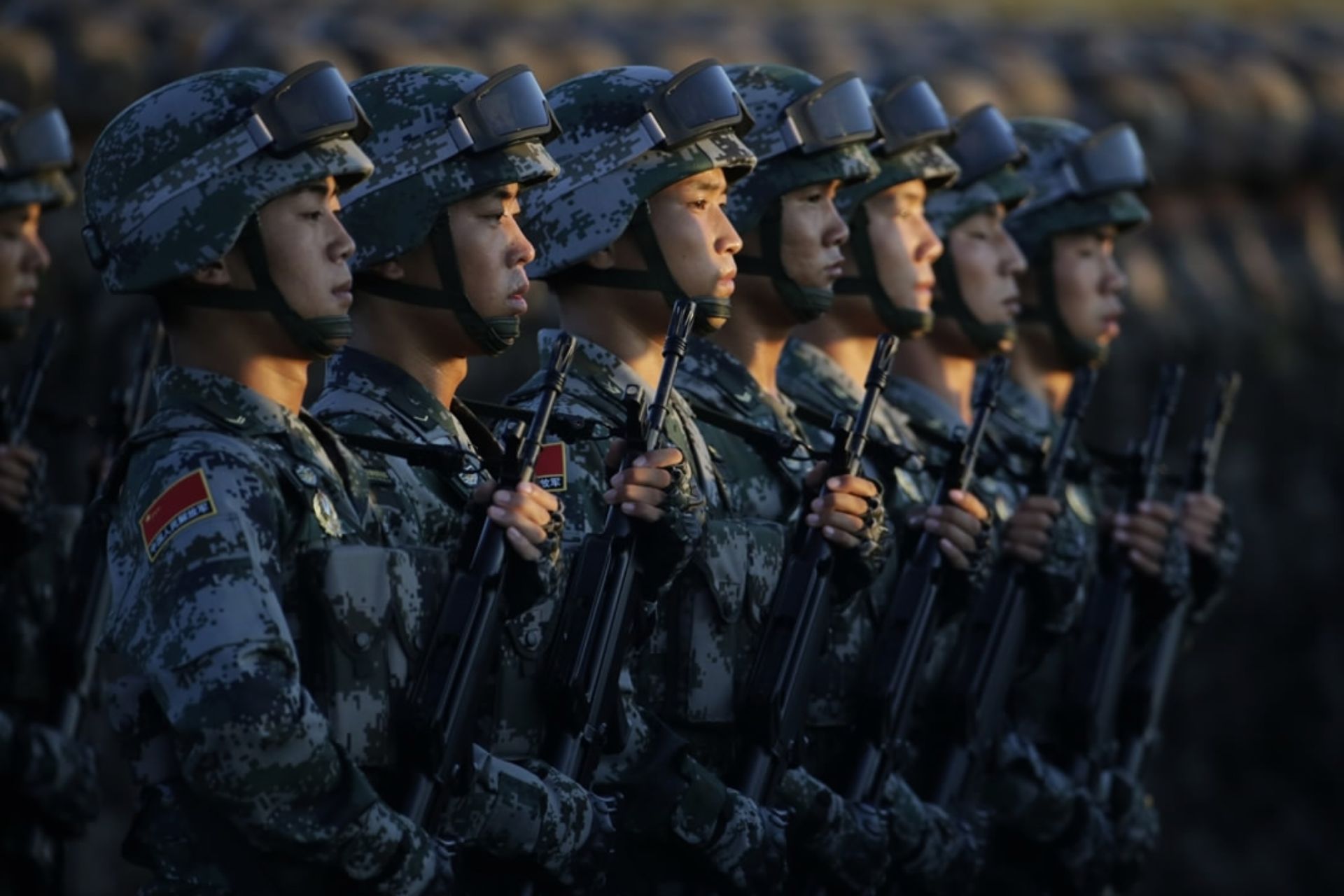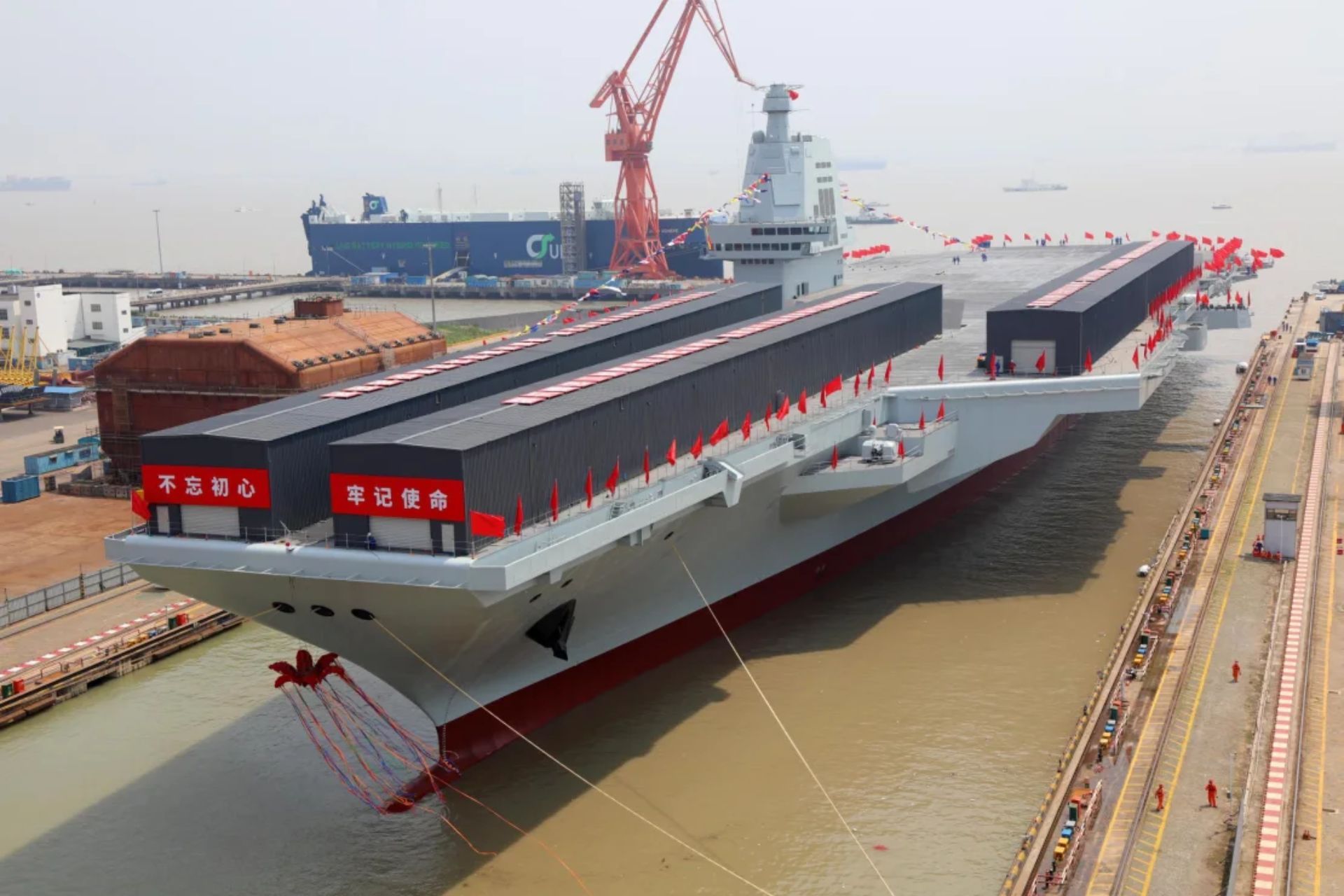Breaking News
Focus: A fragile balance in Asia, China has become leading military power in the region..
Since the end of World War II, the United States has been the largest military power in the Indo-Pacific region. However, China's rapid military growth in this area is tipping the balance in favor of regional power. Too often, Chinese and American military power is compared on a global scale, where the U.S. military, equipped and trained to project its power globally, has a clear advantage. But the military balance in Asia is becoming less clear. China has increasingly demonstrated its ability to develop large-scale modern military capabilities and to project this power regionally.
Follow Army Recognition on Google News at this link

Chineses military during parade in Beijing (Picture source: AFP)
These shifts should ring alarm bells in Washington. The latest version of the Pentagon's annual report to Congress on the Chinese military indicates that the People's Liberation Army (PLA) is evolving its capabilities and concepts to enhance its ability to "fight and win wars" against the United States. The chairman of the House China Committee, Republican Representative John Moolenaar of Michigan, stated that China "has enough weapons to overwhelm our air and missile defenses" that protect American bases in the Pacific.
Extraordinary Military spendings:
A quick review of regional military spending helps better understand the evolution of the military balance in the Indo-Pacific region. Despite Beijing's announced $229 billion for 2022, new research suggests that China's actual military spending was around $711 billion, nearly equivalent to the U.S. defense budget for the same year.
Military expenditures comparable to those of the United States should already be a source of concern, but the advantage is even more pronounced when compared to China's direct neighbors in Asia.
With $711 billion, Beijing spends five times more than its main allies combined and three times more than the big spenders. These investments in combat power are manifested by the rapid growth in size and strength of the Chinese armed forces. In 2017, Xi Jinping stated his desire to transform the PLA into a "world-class army" by the end of 2049, and his investments appear to be bearing fruit.

FC-31 prototype at 2014 China International Aviation & Aerospace Exhibition ( Picture source : Danny Yu)
An Increasingly Numerous and Better-Equipped Army
Today, China possesses the world's largest army, the largest navy, and the largest ground-based missile force. Beijing is also working hard to build a sophisticated arsenal of hypersonic missiles and to triple its nuclear arsenal by 2030.
In comparison, as China rapidly strengthens its military capabilities, the U.S. military is quickly shrinking across all services. In the current budget of President Biden, the army will be reduced to only 442,300 active-duty soldiers, the smallest force size since 1940. The U.S. Navy has halved its size from 40 years ago and is expected to continue shrinking to have only 294 ships by 2030. Meanwhile, the Chinese fleet is expected to reach 425 ships. Similarly, the U.S. Air Force is near its smallest size since the end of World War II, as the retirement of aging aircraft exceeds the purchase of new replacements. Meanwhile, China is rapidly modernizing its air force with locally produced aircraft, such as the J-20 stealth fighter developed from stolen American technologies.
Furthermore, as a global power and to meet the needs of the national defense strategy, the U.S. military must balance priorities in the Indo-Pacific region with those elsewhere, such as deterring Iran, countering Russian aggression, and reinforcing allies' commitments. Therefore, only a fraction of American military power is in the Pacific at any given time. While the U.S. military overall surpasses the Chinese military, China has the luxury of focusing solely on its neighborhood with much more restricted goals, allowing its forces to get more for their money.
Beijing knows this and feels that the balance is shifting, as evidenced by its increasingly bold attempts to use force against U.S. allies such as the Philippines, Japan, and Australia. While Washington has ostensibly shifted resources to Asia to counter Chinese aggression, this has been slow and uneven. Recent wars against our allies in Europe and the Middle East should remind Washington that moving forces while simultaneously reducing them results in powerless adversaries and violent compromises.

US Armed force, Indispensable counter-power
Moreover, Beijing's budgetary advantage over its neighbors highlights the crucial role of American alliances in the Indo-Pacific region. Significant progress was made last year, including increased dialogue with India, Japan, and Australia as part of the Quadrilateral Security Dialogue, the AUKUS submarine agreement with the United Kingdom and Australia, and new base access and security cooperation agreements with the Philippines. As Zack Cooper from the AEI writes, further progress still needs to be made to demonstrate Washington's commitment to security ties with potential partners throughout South and Southeast Asia.
The White House's 2025 defense budget request does little to address this situation, with budget caps limiting defense spending to a one percent increase and forcing services to make difficult decisions and sacrifice increased capacity for readiness.
Senators have responded accordingly and worked to remedy this budget deficit by inserting an additional $21 billion into their defense appropriations bill for next year. This includes crucial funding to restore deterrence in Asia, featuring an $8 billion increase over the President's procurement request, which includes funding for a new destroyer, advanced procurement of amphibious warships, increased production of critical ammunition across all services, and key investments in base defense throughout the Indo-Pacific region.
The Senate's additions are important corrective measures to improve the trend of the United States' increasing distance, but much remains to be done to ensure that both chambers of Congress can pass this series of crucial expenditures. If Washington wants to bridge the gaping gap between our military's strategy and resources, it must provide more resources to bolster American conventional deterrence, which is declining in Asia.


























